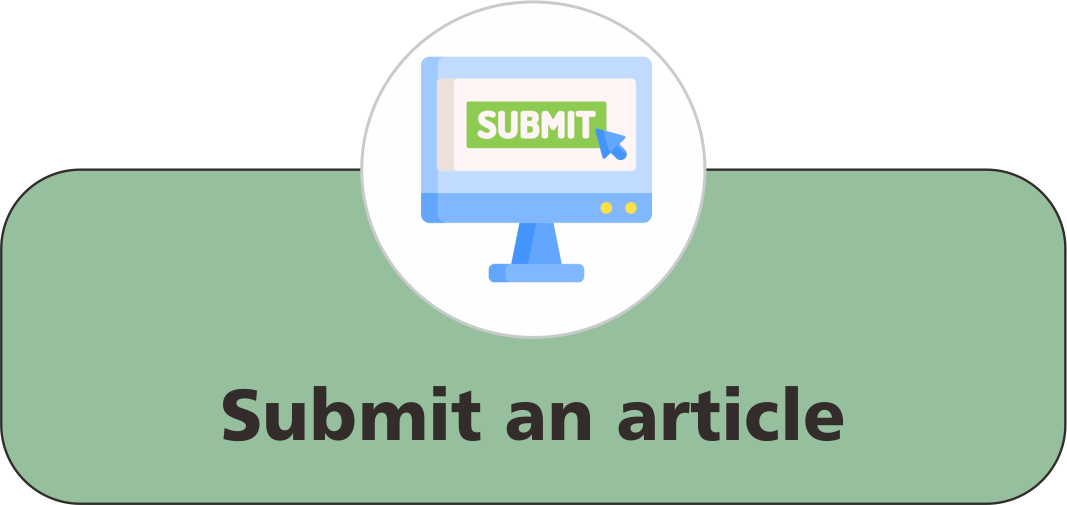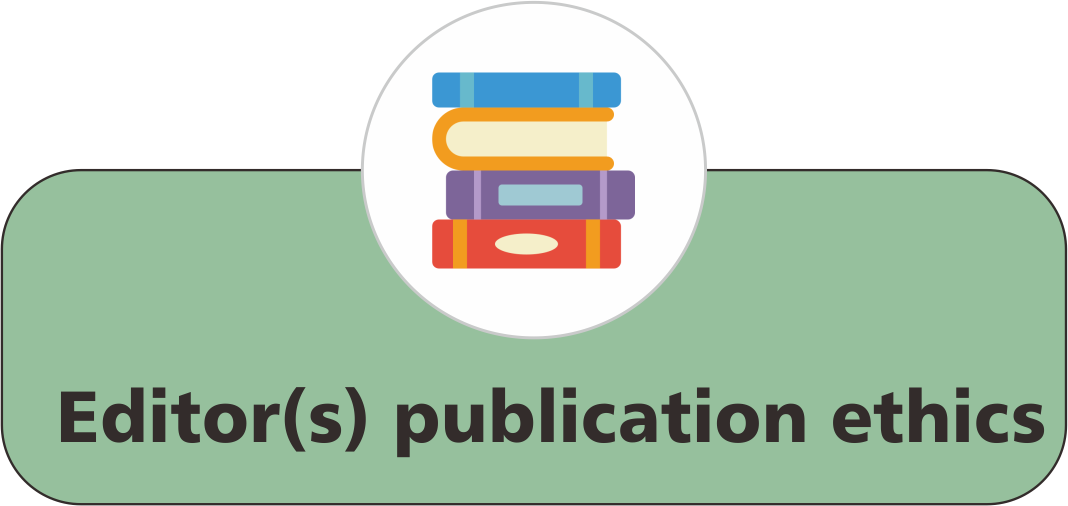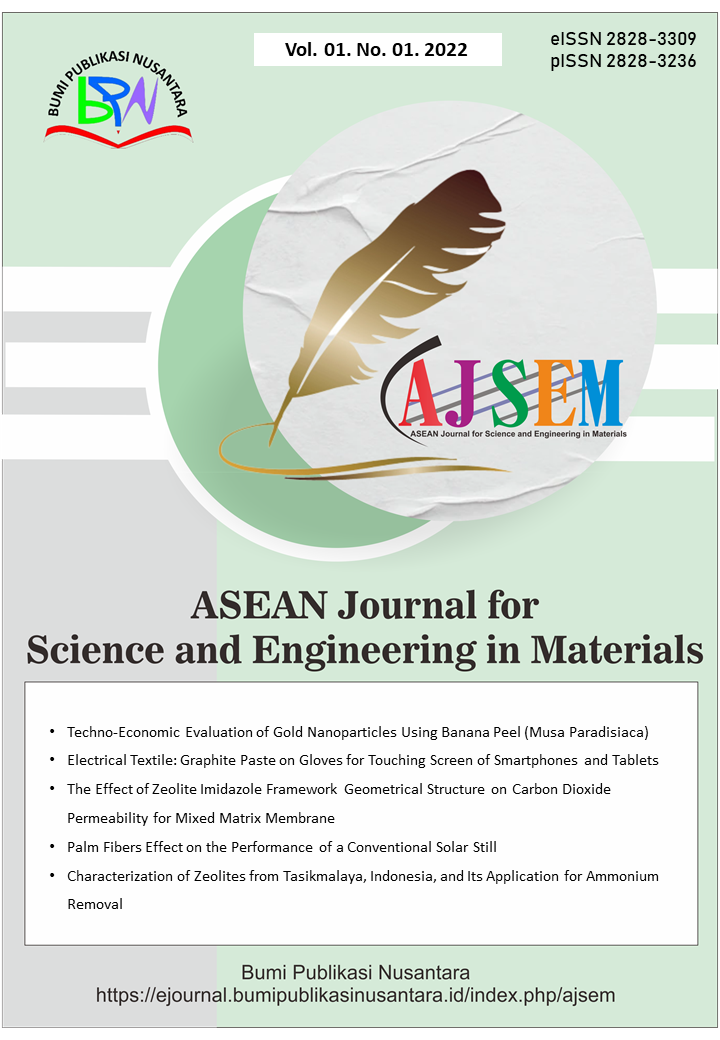Machine Learning-Based CO2 Hydrogenation to High-Value Green Fuels: A Comprehensive Review for Computational Assessment
 ), Rukhsar Latif(2), Shabaz Seher(3), Rida Sajjad(4), Tariq Hussain(5), Muhammad Raza Islam(6), Abdul Waleed(7),
), Rukhsar Latif(2), Shabaz Seher(3), Rida Sajjad(4), Tariq Hussain(5), Muhammad Raza Islam(6), Abdul Waleed(7),
(1) Khawaja Fareed University of Engineering and Information Technology
(2) Lahore College for Women University
(3) University of Education Lahore
(4) University of the Punjab
(5) Government College University
(6) Khawaja Fareed University of Engineering and Information Technology
(7) Government College University
 Corresponding Author
Corresponding Author
Abstract
The biggest candidate for climate change is the emission of CO2 during the burning of fossil fuels and researchers are trying to capture this CO2 efficiently and utilization effectively. This review highlights the parametric effects on conversion, utilization, and selectivity in CO2 hydrogenation via the Fischer-Tropsch method using various catalysts. Collecting the data from reported studies as datasets for quantum mechanical-based simulation software such as DFT and Monte Carlo were employed to probe the characteristics of catalysts, the discovery of novel catalysts, theoretical models for utilization of catalysts and parameters for CO2 hydrogenation such as operational, catalyst information, and mass transfer. Two syntheses such as methanol and methane were studied extensively via machine learning techniques. How artificial intelligence can help experimentalists for finding new catalysts has been discussed and how one can understand the catalytic features in a better way. Furthermore, the key challenges in CO2 hydrogenation technology and future directions based on artificial intelligence have been discussed thoroughly.
Keywords
References
Ahmed, S., Bibi, S. S., Irshad, M., Asif, M., Khan, M. K., and Kim, J. (2024). Synthesis of long-chain paraffins over bimetallic Na–Fe0. 9Mg0. 1Ox by direct CO2 hydrogenation. Topics in Catalysis, 67(5), 363-376.
Ahmed, S., Kazmi, W. W., Butt, F. N., Irshad, M., Sher, F., Kazmi, S. M. A., and Khan, M. K. (2023). Fabrication of nanocage structured based electrocatalyst for oxygen evolution reactions. Materials Letters, 331, 133416.
Ahmed, U., Hussain, M. A., Bilal, M., Zeb, H., Ahmad, N., Ahmad, N., and Usman, M. (2021). Production of hydrogen from low rank coal using process integration framework between syngas production processes: techno-economic analysis. Chemical Engineering and Processing-Process Intensification, 169, 108639.
Alitalo, A., Niskanen, M., and Aura, E. (2015). Biocatalytic methanation of hydrogen and carbon dioxide in a fixed bed bioreactor. Bioresource Technology, 196, 600-605.
Aonishi, T., Mimura, K., Okada, M., and Yamamoto, Y. (2022). L0 regularization-based compressed sensing with quantum–classical hybrid approach. Quantum Science and Technology, 7(3), 035013.
Asadzadeh, M. Z., Gänser, H. P., and Mücke, M. (2021). Symbolic regression-based hybrid semiparametric modelling of processes: an example case of a bending process. Applications in Engineering Science, 6, 100049.
Asif, M., Bibi, S. S., Ahmed, S., Irshad, M., Hussain, M. S., Zeb, H., and Kim, J. (2023). Recent advances in green hydrogen production, storage and commercial-scale use via catalytic ammonia cracking. Chemical Engineering Journal, 437, 145381.
Asif, M., Hussain, M. A., Riaz, A., Mujahid, R., Akram, M. S., Haider, B., and Zeb, H. (2023). A physical coal cleaning approach for clean energy production from low grade Lakhra coal of Pakistan using diester table. Journal of the Pakistan Institute of Chemical Engineers, 51(2), 1-9.
Asif, M., Salman, M. U., Anwar, S., Gul, M., and Aslam, R. (2022). Renewable and non‐renewable energy resources of Pakistan and their applicability under the current scenario in Pakistan. OPEC Energy Review, 46(3), 310-339.
Azzolina-Jury, F. (2019). Novel boehmite transformation into γ-alumina and preparation of efficient nickel base alumina porous extrudates for plasma-assisted CO2 methanation. Journal of Industrial and Engineering Chemistry, 71, 410-424.
Baddour, F. G., Roberts, E. J., To, A. T., Wang, L., Habas, S. E., Ruddy, D. A., and Malmstadt, N. (2020). An exceptionally mild and scalable solution-phase synthesis of molybdenum carbide nanoparticles for thermocatalytic CO2 hydrogenation. Journal of the American Chemical Society, 142(2), 1010-1019.
Carrasco-García, A., Vali, S. A., Ben-Abbou, Z., Moral-Vico, J., Abo Markeb, A., and Sánchez, A. (2024). Synthesis of Cobalt-based nanoparticles as catalysts for methanol synthesis from CO2 hydrogenation. Materials, 17(3), 697.
Chai, J., Jiang, J., Gong, Y., Wu, P., Wang, A., Zhang, X., and Wang, P. (2023). Recent mechanistic understanding of fischer-tropsch synthesis on Fe-carbide. Catalysts, 13(7), 1052.
Chen, J., Duan, L., and Sun, Z. (2020). Review on the development of sorbents for calcium looping. Energy and Fuels, 34(7), 7806-7836.
Ciobı̂că, I. M., Kramer, G. J., Ge, Q., Neurock, M., and Van Santen, R. A. (2002). Mechanisms for chain growth in Fischer–Tropsch synthesis over Ru (0001). Journal of Catalysis, 212(2), 136-144.
Dang, S., Qin, B., Yang, Y., Wang, H., Cai, J., Han, Y., and Sun, Y. (2020). Rationally designed indium oxide catalysts for CO2 hydrogenation to methanol with high activity and selectivity. Science advances, 6(25), eaaz2060.
Davis, B. H. (2009). Fischer–Tropsch synthesis: Reaction mechanisms for iron catalysts. Catalysis Today, 141(1-2), 25-33.
Elbashir, N. O., Chatla, A., Lemonidou, A., and Spivey, J. J. (2020). Reaction engineering and catalysis issue in honor of professor dragomir bukur: Introduction and review. Catalysis Today, 343, 1-7.
Esterhuizen, J. A., Goldsmith, B. R., and Linic, S. (2022). Interpretable machine learning for knowledge generation in heterogeneous catalysis. Nature Catalysis, 5(3), 175-184.
Gao, P., Zhang, L., Li, S., Zhou, Z., and Sun, Y. (2020). Novel heterogeneous catalysts for CO2 hydrogenation to liquid fuels. ACS Central Science, 6(10), 1657-1670.
Gao, Y., Dou, L., Zhang, S., Zong, L., Pan, J., Hu, X., ... and Shao, T. (2021). Coupling bimetallic Ni-Fe catalysts and nanosecond pulsed plasma for synergistic low-temperature CO2 methanation. Chemical Engineering Journal, 420, 127693.
Ghiringhelli, L. M., Vybiral, J., Ahmetcik, E., Ouyang, R., Levchenko, S. V., Draxl, C., and Scheffler, M. (2017). Learning physical descriptors for materials science by compressed sensing. New Journal of Physics, 19(2), 023017.
Ghiringhelli, L. M., Vybiral, J., Levchenko, S. V., Draxl, C., and Scheffler, M. (2015). Big data of materials science: critical role of the descriptor. Physical Review Letters, 114(10), 105503.
Goldsmith, B. R., Esterhuizen, J., Liu, J. X., Bartel, C. J., and Sutton, C. (2018). Machine learning for heterogeneous catalyst design and discovery (vol 64, pg 2311, 2018). AIChE Journal, 64(9), 3553-3553.
Han, S. J., Hwang, S. M., Park, H. G., Zhang, C., Jun, K. W., and Kim, S. K. (2020). Identification of active sites for CO 2 hydrogenation in Fe catalysts by first-principles microkinetic modelling. Journal of Materials Chemistry A, 8(26), 13014-13023.
Han, X., Mou, T., Liu, S., Ji, M., Gao, Q., He, Q., ... and Zhu, H. (2022). Heterostructured Bi–Cu 2 S nanocrystals for efficient CO 2 electroreduction to formate. Nanoscale Horizons, 7(5), 508-514.
Hassan, A. M. M., Asif, M., Al-Mansur, M. A., Uddin, M. R., Alsufyani, S. J., Yasmin, F., and Khandaker, M. U. (2023). Characterization of municipal solid waste for effective utilization as an alternative source for clean energy production. Journal of Radiation Research and Applied Sciences, 16(4), 100683.
He, M., Sun, Y., and Han, B. (2022). Green carbon science: efficient carbon resource processing, utilization, and recycling towards carbon neutrality. Angewandte Chemie, 134(15), e202112835.
Hohenberg, P., and Kohn, W. (1964). Inhomogeneous electron gas. Physical review, 136(3B), B864.
Huang, H., Yue, K., Liu, C., Zhan, K., Dong, H., and Yan, Y. (2024). CuO (111) Microcrystalline evoked indium–organic framework for efficient electroreduction of CO2 to formate. Small, 2400441.
Jian, Z., Yu, J., Madatta, I. J., Liu, Y., and Ding, J. (2024). Granular protruded irregular Cu2O catalysts for efficient CO2 reduction to C2 products. Journal of Colloid and Interface Science, 653, 1415-1422.
Jung, Y., and Hu, J. (2015). AK-fold averaging cross-validation procedure. Journal of Nonparametric Statistics, 27(2), 167-179.
Kattel, S., Ramírez, P. J., Chen, J. G., Rodriguez, J. A., and Liu, P. (2017). Response to Comment on “Active sites for CO2 hydrogenation to methanol on Cu/ZnO catalysts”. Science, 357(6354), eaan8210.
Khan, M. S., Asif, M. I., Asif, M., Khan, M. R., Mustafa, G., and Adeel, M. (2024b). Nanomaterials for the Catalytic Degradation and Detection of Microplastics: A Review. Topics in Catalysis, 2024, 1-18.
Khan, M. S., Asif, M. I., Karim, H., Zainab, S. A., Asif, M., Sohail, M., and Haq, H. U. (2024a). Electrospun fibers: promising materials for oil water separation. In Nanotechnology for Oil-Water Separation, 2024, 261-288.
Khatamirad, M., Fako, E., Boscagli, C., Müller, M., Ebert, F., d'Alnoncourt, R. N., and De, S. (2023). A data-driven high-throughput workflow applied to promoted In-oxide catalysts for CO 2 hydrogenation to methanol. Catalysis Science and Technology, 13(9), 2656-2661.
Kohn, W., and Sham, L. J. (1965). Self-consistent equations including exchange and correlation effects. Physical Review, 140(4A), A1133.
Krausser, L., Yang, Q., and Kondratenko, E. V. (2024). CO2 hydrogenation to hydrocarbons over Fe‐based catalysts: Status and recent developments. ChemCatChem, 2024, e202301716.
Kuipers, E. W., Vinkenburg, I. H., and Oosterbeek, H. (1995). Chain length dependence of α-olefin readsorption in Fischer-Tropsch synthesis. Journal of Catalysis, 152(1), 137-146.
Kumar, R., and Singh, A. K. (2021). Chemical hardness-driven interpretable machine learning approach for rapid search of photocatalysts. npj Computational Materials, 7(1), 197.
Li, J., Pan, L., Suvarna, M., and Wang, X. (2021). Machine learning aided supercritical water gasification for H2-rich syngas production with process optimization and catalyst screening. Chemical Engineering Journal, 426, 131285.
Liu, Q. Y., Shang, C., and Liu, Z. P. (2021). In situ active site for CO activation in Fe-catalyzed Fischer–Tropsch synthesis from machine learning. Journal of the American Chemical Society, 143(29), 11109-11120..
Liu, Z., Deng, Z., Davis, S. J., Giron, C., and Ciais, P. (2022). Monitoring global carbon emissions in 2021. Nature Reviews Earth and Environment, 3(4), 217-219.
Loveless, B. T., Buda, C., Neurock, M., and Iglesia, E. (2013). CO chemisorption and dissociation at high coverages during CO hydrogenation on Ru catalysts. Journal of the American Chemical Society, 135(16), 6107-6121.
Mahnaz, F., Mangalindan, J. R., Dharmalingam, B. C., Vito, J., Lin, Y. T., Akbulut, M., ... and Shetty, M. (2024). Intermediate transfer rates and solid-state ion exchange are key factors determining the bifunctionality of In2O3/HZSM-5 tandem CO2 hydrogenation catalyst. ACS Sustainable Chemistry and Engineering, 12(13), 5197-5210.
Maitlis, P. M. (2004). Fischer–Tropsch, organometallics, and other friends. Journal of Organometallic Chemistry, 689(24), 4366-4374.
Manthiram, K., Beberwyck, B. J., and Alivisatos, A. P. (2014). Enhanced electrochemical methanation of carbon dioxide with a dispersible nanoscale copper catalyst. Journal of the American Chemical Society, 136(38), 13319-13325.
Martin, O., Martín, A. J., Mondelli, C., Mitchell, S., Segawa, T. F., Hauert, R., and Pérez‐Ramírez, J. (2016). Titelbild: Indium oxide as a superior catalyst for methanol synthesis by CO2 hydrogenation (Angew. Chem. 21/2016). Angewandte Chemie, 128(21), 6215-6215.
Medford, A. J., Kunz, M. R., Ewing, S. M., Borders, T., and Fushimi, R. (2018). Extracting knowledge from data through catalysis informatics. Acs Catalysis, 8(8), 7403-7429.
Min, S., Xu, X., He, J., Sun, M., Lin, W., and Kang, L. (2024). Construction of cobalt porphyrin‐modified cu2o nanowire array as a tandem electrocatalyst for enhanced CO2 reduction to C2 products. Small, 2024, 2400592.
Motaev, K., Molokeev, M., Sultanov, B., Kharitontsev, V., Matigorov, A., Palianov, M., ... and Elyshev, A. (2023). Application of machine learning to fischer–tropsch synthesis for cobalt catalysts. Industrial and Engineering Chemistry Research, 62(48), 20658-20666.
Mousavi, S., Zamaniyan, A., Irani, M., and Rashidzadeh, M. (2015). Generalized kinetic model for iron and cobalt based Fischer–Tropsch synthesis catalysts: Review and model evaluation. Applied Catalysis A: General, 506, 57-66.
Nakamura, J., Fujitani, T., Kuld, S., Helveg, S., Chorkendorff, I., and Sehested, J. (2017). Comment on “Active sites for CO2 hydrogenation to methanol on Cu/ZnO catalysts”. Science, 357(6354), eaan8074.
Nguyen, T. N., Nhat, T. T. P., Takimoto, K., Thakur, A., Nishimura, S., Ohyama, J., and Taniike, T. (2019). High-throughput experimentation and catalyst informatics for oxidative coupling of methane. Acs Catalysis, 10(2), 921-932.
Nie, X., Wang, H., Janik, M. J., Guo, X., and Song, C. (2016). Computational investigation of Fe–Cu bimetallic catalysts for CO2 hydrogenation. The Journal of Physical Chemistry C, 120(17), 9364-9373.
Nørskov, J. K., Bligaard, T., Rossmeisl, J., and Christensen, C. H. (2009). Towards the computational design of solid catalysts. Nature Chemistry, 1(1), 37-46.
Overett, M. J., Hill, R. O., and Moss, J. R. (2000). Organometallic chemistry and surface science: mechanistic models for the Fischer–Tropsch synthesis. Coordination Chemistry Reviews, 206, 581-605.
Pablo-Garcia, S., Sabadell-Rendón, A., Saadun, A. J., Morandi, S., Pérez-Ramírez, J., and Lopez, N. (2022). Generalizing performance equations in heterogeneous catalysis from hybrid data and statistical learning. ACS Catalysis, 12(2), 1581-1594.
Riaz, A., Verma, D., Zeb, H., Lee, J. H., Kim, J. C., Kwak, S. K., and Kim, J. (2018). Solvothermal liquefaction of alkali lignin to obtain a high yield of aromatic monomers while suppressing solvent consumption. Green Chemistry, 20(21), 4957-4974.
Rönsch, S., Schneider, J., Matthischke, S., Schlüter, M., Götz, M., Lefebvre, J., and Bajohr, S. (2016). Review on methanation–From fundamentals to current projects. Fuel, 166, 276-296.
Ryu, U. J., Kim, S. J., Lim, H. K., Kim, H., Choi, K. M., and Kang, J. K. (2017). Synergistic interaction of Re complex and amine functionalized multiple ligands in metal-organic frameworks for conversion of carbon dioxide. Scientific Reports, 7(1), 612.
Saadun, A. J., Pablo-García, S., Paunovic, V., Li, Q., Sabadell-Rendón, A., Kleemann, K., and Pérez-Ramírez, J. (2020). Performance of metal-catalyzed hydrodebromination of dibromomethane analyzed by descriptors derived from statistical learning. ACS Catalysis, 10(11), 6129-6143.
Schulz, H. (2013). Principles of Fischer–Tropsch synthesis—Constraints on essential reactions ruling FT-selectivity. Catalysis Today, 214, 140-151.
Schulz, H. (2020). Confinements on growth sites of Fischer-Tropsch synthesis, manifesting in hydrocarbon-chain branching–Nature of growth site and growth-reaction. Applied Catalysis A: General, 602, 117695.
Schweicher, J., Bundhoo, A., and Kruse, N. (2012). Hydrocarbon chain lengthening in catalytic CO hydrogenation: evidence for a CO-insertion mechanism. Journal of the American Chemical Society, 134(39), 16135-16138.
Şener, A. N., Günay, M. E., Leba, A., and Yıldırım, R. (2018). Statistical review of dry reforming of methane literature using decision tree and artificial neural network analysis. Catalysis Today, 299, 289-302.
Shahbaz, M., Yusup, S., Al-Ansari, T., Inayat, A., Inayat, M., Zeb, H., and Alnarabiji, M. S. (2019). Characterization and reactivity study of coal bottom ash for utilization in biomass gasification as an adsorbent/catalyst for cleaner fuel production. Energy and Fuels, 33(11), 11318-11327.
Sharma, P., Sebastian, J., Ghosh, S., Creaser, D., and Olsson, L. (2021). Recent advances in hydrogenation of CO 2 into hydrocarbons via methanol intermediate over heterogeneous catalysts. Catalysis Science and Technology, 11(5), 1665-1697.
Siddiqi, M. H., Liu, X. M., Hussain, M. A., Qureshi, T., Tabish, A. N., Lateef, H. U., and Nawaz, S. (2022). Evaluation of physiochemical, thermal and kinetic properties of wheat straw by demineralising with leaching reagents for energy applications. Energy, 238, 122013.
Smith, A., Keane, A., Dumesic, J. A., Huber, G. W., and Zavala, V. M. (2020). A machine learning framework for the analysis and prediction of catalytic activity from experimental data. Applied Catalysis B: Environmental, 263, 118257.
Sun, Y., Wang, Y., He, J., Yusuf, A., Wang, Y., Yang, G., and Xiao, X. (2021). Comprehensive kinetic model for acetylene pretreated mesoporous silica supported bimetallic Co-Ni catalyst during Fischer-Trospch synthesis. Chemical Engineering Science, 246, 116828.
Suzuki, K., Toyao, T., Maeno, Z., Takakusagi, S., Shimizu, K. I., and Takigawa, I. (2019). Statistical analysis and discovery of heterogeneous catalysts based on machine learning from diverse published data. ChemCatChem, 11(18), 4537-4547.
Tahir, M., and Tahir, B. (2020a). 2D/2D/2D O-C3N4/Bt/Ti3C2Tx heterojunction with novel MXene/clay multi-electron mediator for stimulating photo-induced CO2 reforming to CO and CH4. Chemical Engineering Journal, 400, 125868.
Tahir, M., and Tahir, B. (2020b). Constructing a stable 2D/2D heterojunction of oxygen-cluster-modified Ti3AlC2 MAX cocatalyst with proton-rich C3N4 for highly efficient photocatalytic CO2 methanation. Industrial and Engineering Chemistry Research, 59(21), 9841-9857.
Takahashi, K., Takahashi, L., Miyazato, I., Fujima, J., Tanaka, Y., Uno, T., and Taniike, T. (2019). The rise of catalyst informatics: towards catalyst genomics. ChemCatChem, 11(4), 1146-1152.
Tang, X., Song, C., Li, H., Liu, W., Hu, X., Chen, Q., and Lin, L. (2024). Thermally stable Ni foam-supported inverse CeAlOx/Ni ensemble as an active structured catalyst for CO2 hydrogenation to methane. Nature Communications, 15(1), 3115.
Tariq, R., Inayat, A., Shahbaz, M., Zeb, H., Ghenai, C., Al-Ansari, T., and Kim, J. (2023). Kinetic and thermodynamic evaluation of pyrolysis of jeans waste via coats-redfern method. Korean Journal of Chemical Engineering, 40(1), 155-161.
Tavasoli, A., Abbaslou, R. M. M., and Dalai, A. K. (2008). Deactivation behavior of ruthenium promoted Co/γ-Al2O3 catalysts in Fischer–Tropsch synthesis. Applied Catalysis A: General, 346(1-2), 58-64.
Teng, B. T., Chang, J., Zhang, C. H., Cao, D. B., Yang, J., Liu, Y., ... and Li, Y. W. (2006). A comprehensive kinetics model of Fischer–Tropsch synthesis over an industrial Fe–Mn catalyst. Applied Catalysis A: General, 301(1), 39-50.
Toyao, T., Maeno, Z., Takakusagi, S., Kamachi, T., Takigawa, I., and Shimizu, K. I. (2019). Machine learning for catalysis informatics: recent applications and prospects. Acs Catalysis, 10(3), 2260-2297.
Trunschke, A. (2022). Prospects and challenges for autonomous catalyst discovery viewed from an experimental perspective. Catalysis Science and Technology, 12(11), 3650-3669.
Urakawa, A. (2016). Trends and advances in Operando methodology. Current Opinion in Chemical Engineering, 12, 31-36.
Verma, A., and Fu, Y. P. (2023). The prospect of CuxO-based catalysts in photocatalysis: From pollutant degradation, CO2 reduction, and H2 production to N2 fixation. Environmental Research, 241, 117656.
Vogt, C., Monai, M., Kramer, G. J., and Weckhuysen, B. M. (2019). The renaissance of the Sabatier reaction and its applications on Earth and in space. Nature Catalysis, 2(3), 188-197.
Vos, R. E., and Koper, M. T. (2024). Nickel as Electrocatalyst for CO (2) Reduction: Effect of temperature, potential, partial pressure, and electrolyte composition. ACS Catalysis, 14(7), 4432-4440.
Wang, Q., Wang, H., Ren, X., Pang, R., Zhao, X., Zhang, L., and Li, S. (2023). Synergetic role of thermal catalysis and photocatalysis in CO2 reduction on Cu2/MoS2. The Journal of Physical Chemistry Letters, 14(38), 8421-8427.
Wang, S., Teramura, K., Hisatomi, T., Domen, K., Asakura, H., Hosokawa, S., and Tanaka, T. (2021). Dual Ag/Co cocatalyst synergism for the highly effective photocatalytic conversion of CO 2 by H 2 O over Al-SrTiO 3. Chemical Science, 12(13), 4940-4948.
Weckhuysen, B. M., and Yu, J. (2015). Recent advances in zeolite chemistry and catalysis. Chemical Society Reviews, 44(20), 7022-7024.
Yang, Y., Louisia, S., Yu, S., Jin, J., Roh, I., Chen, C., and Yang, P. (2023). Operando studies reveal active Cu nanograins for CO2 electroreduction. Nature, 614(7947), 262-269.
Younas, M., Loong Kong, L., Bashir, M. J., Nadeem, H., Shehzad, A., and Sethupathi, S. (2016). Recent advancements, fundamental challenges, and opportunities in catalytic methanation of CO2. Energy and Fuels, 30(11), 8815-8831.
Zavyalova, U., Holena, M., Schlögl, R., and Baerns, M. (2011). Statistical analysis of past catalytic data on oxidative methane coupling for new insights into the composition of high‐performance catalysts. ChemCatChem, 3(12), 1935-1947.
Zeb, H., Hussain, M. A., Ahmed, I., Akram, M. S., Haider, B., Haider, R., and Arif, M. (2021). Study of bleaching of old newsprint recycled paper: reproduction of newspaper material. Materials Research Express, 8(8), 085305.
Zeb, H., Hussain, M. A., Javed, M., Qureshi, T., Dawood, H., Abbas, R., and Siddiqi, M. H. (2023). Study of bio-oil production from sewage sludge of a municipal wastewater treatment plant by using hydrothermal liquefaction (HTL). Thermal Science, (00), 262-262.
Zeb, H., Riaz, A., and Kim, J. (2017). Effective conversion of the carbohydrate-rich macroalgae (Saccharina japonica) into bio-oil using low-temperature supercritical methanol. Energy conversion and management, 151, 357-367.
Zhong, J., Yang, X., Wu, Z., Liang, B., Huang, Y., and Zhang, T. (2020). State of the art and perspectives in heterogeneous catalysis of CO 2 hydrogenation to methanol. Chemical Society Reviews, 49(5), 1385-1413.
Zhou, S., Kosari, M., and Zeng, H. C. (2024). Boosting CO2 hydrogenation to methanol over monolayer MoS2 nanotubes by creating more strained basal planes. Journal of the American Chemical Society, 146(14), 10032-10043.
Zhu, J., Wang, P., Zhang, X., Zhang, G., Li, R., Li, W., and Guo, X. (2022). Dynamic structural evolution of iron catalysts involving competitive oxidation and carburization during CO2 hydrogenation. Science Advances, 8(5), eabm3629.
Article Metrics
Abstract View : 740 times
: 740 times Download : 197 times
Download : 197 times
Refbacks
- There are currently no refbacks.
Copyright (c) 2024 Bumi Publikasi Nusantara

This work is licensed under a Creative Commons Attribution-ShareAlike 4.0 International License.









